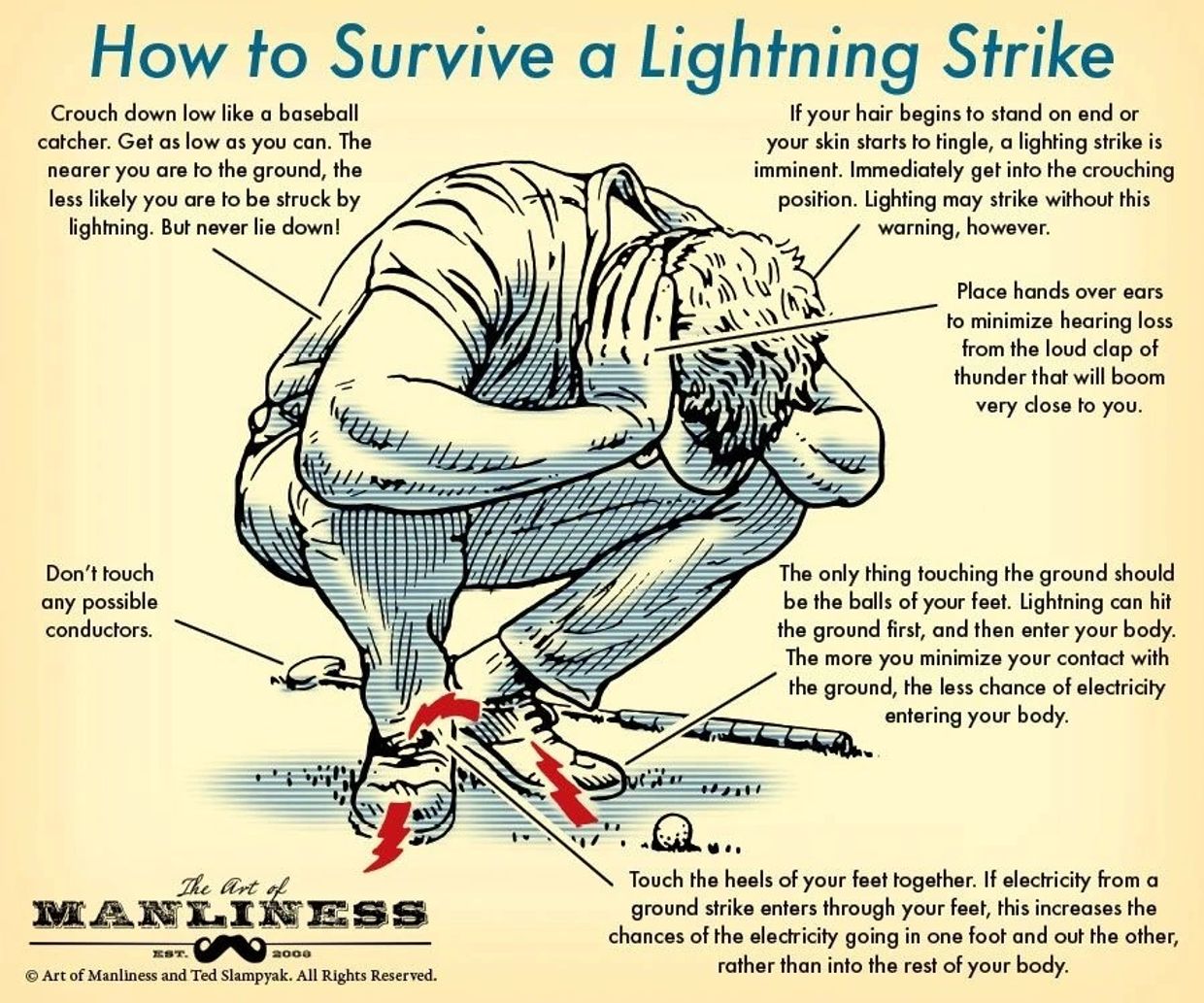
Lightning Safety
Lightning is a bright flash of electricity produced by a thunderstorm. All thunderstorms produce lightning and are very dangerous. If you hear the sound of thunder, then you are in danger. Each bolt of lightning is 29,982 degree Celsius hot which is hotter than the surface of the sun. It can contain 1 gigajoule of energy which is enough to destroy anything in its path.
Lightning is a major cause of death in India. In 2018, more than 2,300 people died due to lightning strike.
With advancement in science and technology we can predict thunderstorm activity but where will a lightning strike can’t be predicted. We can still ensure our and our families safety by following the below mentioned points:
- During a thunderstorm, avoid open areas.
- When there is a thunderstorm, don’t be the tallest object in the area.
- During a thunderstorm stay away from isolated tall trees, advertisement towers, electricity poles, flags, chimneys, telephone signal towers, radio towers. Lightning tends to strike the taller objects in an area.
- Stay away from metal conductors such as wires or fences. Metal does not attract lightning, but lightning can travel long distances through it.
- If you are with a group of people, spread out. While this actually increases the chance that someone might get struck, it tends to prevent multiple casualties and increases the chances that someone could help if a person is struck.
- Lightning often strikes outside the area of heavy rain. That means it can strike even before the sky turns dark due to storm clouds or after a storm has passed.
- If you can hear thunder, you are in danger. Don’t be fooled by blue skies. If you hear thunder, lightning is close enough to pose an immediate threat.
- Not everyone who is struck by lightning dies, many people are left with serious injuries and sometimes with permanent disabilities.
- Keep away from electrical equipment and plumbing. Lightning will travel through the wiring and plumbing if your building is struck. Don’t take bath at home or in open during a thunderstorm. Delay washing clothes and dishes during a thunderstorm.
- Immediately get off elevated areas such as hills, mountain ridges or peaks
- In case you are in open during a storm, never lie flat on the ground. Instead squat and make yourself as small as possible, ensure your hands are covering your ears, and also ensure your soles are touching each other.
- Never take shelter under an isolated tree or tin shed.
- Never take shelter close to a cliff or where rocks are over your head.
- Immediately get out and away from ponds, lakes, and other bodies of water.
- Protect your animals. Animals that are chained or tied to trees or a pole are particularly vulnerable to lightning strikes.
- Lightning generates electric surges that can damage electronic equipment some distance from the actual strike. Typical surge protectors will not protect equipment from a lightning strike. Install a lightning arrestor in your home.
If you are in open and can’t get to a safe location, make yourself as small as possible. Follow the instructions in the image below to ensure your safety.
This website uses cookies.
We use cookies to analyze website traffic and optimize your website experience. By accepting our use of cookies, your data will be aggregated with all other user data.
